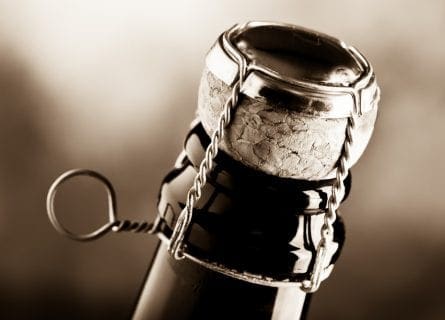
Champagne vs Sparkling Wines
May 21, 2020
Bubbles Unleashed: Champagne vs. Sparkling Wines - A sparkling guide to flavor, production, & regional distinctions. Cheers!
By: James lawrence / Last updated: December 12, 2024
Estimated reading time: 1 minute
For any visitor touring the Champagne region, the sight is instantly recognizable; row upon row of bottles being stored horizontally in Champagne’s ancient and majestic chalk cellars. Hidden underground, the cellars’ depth ensures the perfect ambient temperature for storing Champagne cuvées destined for long aging – the most prestigious bottles can be stored for decades before they are disgorged and brought to market. After aging ‘sur lattes’ – bottles laid horizontally on thin wooden laths – the bottles are put into wooden racks called pupitres for a process called remuage. This involves riddling the bottles to loosen the dead yeast cells left over from the second fermentation, ensuring that they collect in the bottleneck. Manual remuage is painstaking work; dedicated workers turn bottles stored at an angle over four to six weeks. The dead yeast cells are then ejected, and the bottle is corked. And all for the love of Champagne!
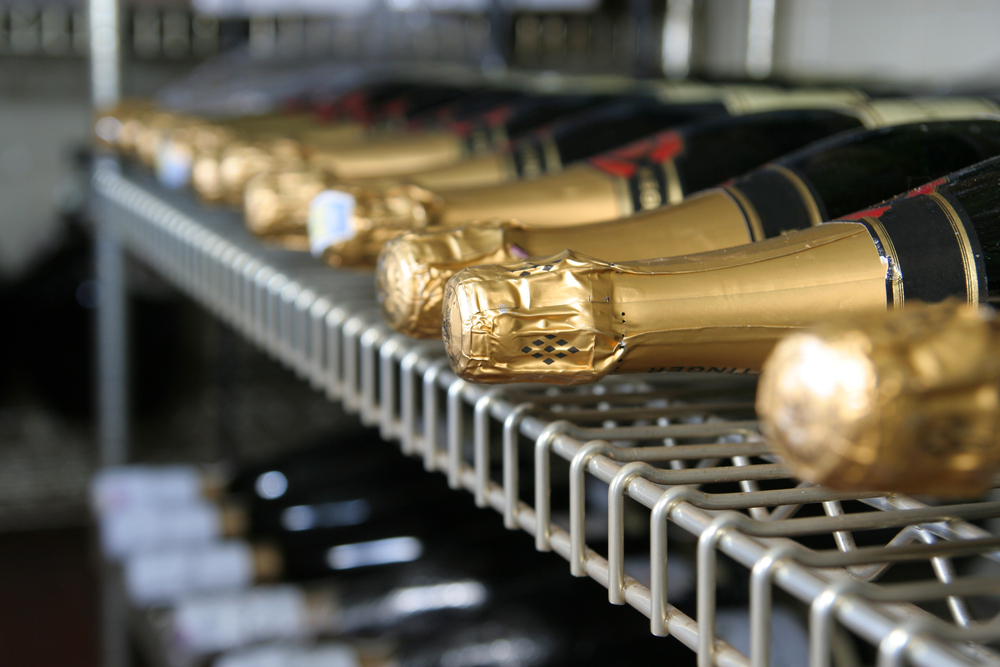
Of course, the Dom Perignon aficionado faces no such rigmarole. If you’re short on time, opening and enjoying a bottle of Champagne requires little effort or preparation. Simply take a chilled bottle from the fridge, remove the cork, and enjoy. To credit the process with any more thought or technical knowledge may initially suggest a weak attempt at wine pretension – a ludicrous overstatement, perhaps. Yet collectors who wish to store their prized bottles for a special anniversary in the year 2030 should know that there is an art to aging and serving Champagne at home. To avoid expensive disappointments, please read on.
To learn more about how Champagne is made using the traditional Méthode Champenoise, be sure to check out our detailed blog post!
We’ll start by assuming that most fizz acolytes – even passionate collectors – don’t have a chalk cellar in Epernay at their disposal. In that case, you’ll need a cool part of your home to store Champagne – preferably in an area where the temperature doesn’t vary. Champagne is a sensitive creature; higher temperatures encourage a faster oxidation rate in sparkling wine and can potentially ruin a good bottle of Krug over a more extended period. Ideally, the ambient temperature should not rise above 12 degrees centigrade. However, if you only plan to store your bottles for a short period, it is no problem keeping Champagne at a constant temperature of between 12-18 degrees centigrade. Erratic temperatures are no friend to bottles of fizz: they quicken the aging process and can eventually result in oxidized, sherry-like flavors. The freshness and vitality will have evaporated.
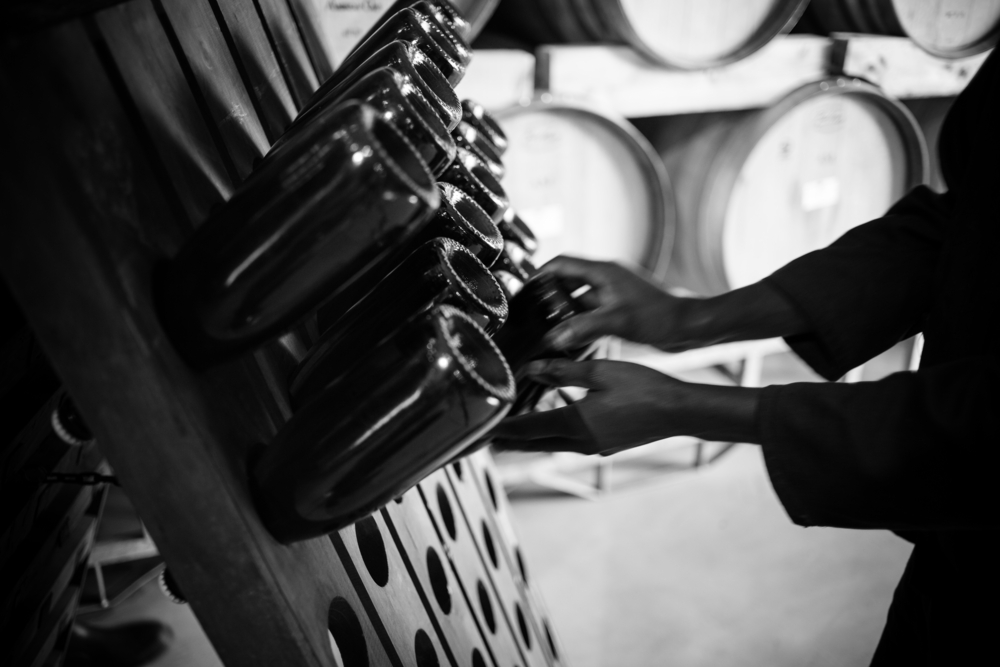
But there is a threat to your prized bottle of Cristal that is even more pernicious than a Californian heatwave. Prolonged exposure to ultraviolet light can destroy Champagne, resulting in vegetative aromas and unpleasant, ‘rotten’ flavors. If you intend the store bottles for long periods, it is vital to check the seller’s provenance and ensure the bottles are kept hidden from UV light. We tend to keep our vintages in their original storage boxes if they were part of the purchase. Louis Roederer wisely includes yellow cellophane wrapping with their bottles of Cristal to protect them from UV light. Yet the bottle itself is clear, which is inadvisable for most Champagne and sparkling wine. Brown glass bottles offer the best protection against UV light; dark green is also preferred. Never store a clear glass bottle in an area that receives direct sunlight or high-intensity ultra-violet light. You’re asking for rapid spoilage.
However, there is some point of disagreement about storing Champagne horizontally or vertically – is this brilliantly geeky, or what? The conventional wisdom is that all wine – both the still and fizzy variety – should be stored horizontally. This is because the wine keeps the cork moist and stops it from drying out and contracting, leading to oxidized wine and spoilage. Nevertheless, Champagne experts insist that storing bottles vertically is not a major faux pas. They explain that all sparkling wine, be it luxurious or every day, can be stored in an upright position due to the carbon dioxide in the space between the cork and the wine. This is Champagne’s secret weapon – the CO2 provides sufficient humidity to keep the cork moist even if the bottles are stored vertically. In addition, the risk of cork taint is reduced significantly. Yet others would stamp their feet and point out that horizontal storage is a proven method and the most efficient in terms of saving space. In the end, you must decide.
The topic of serving and enjoying Champagne is also arguably one of significant subjectivity, leaning heavily towards personal preference. But, if you’ve been waiting patiently for 15 years to open your bottle of Krug 1995, then surely a few tips can’t hurt? Glassware is undoubtedly always open to debate.
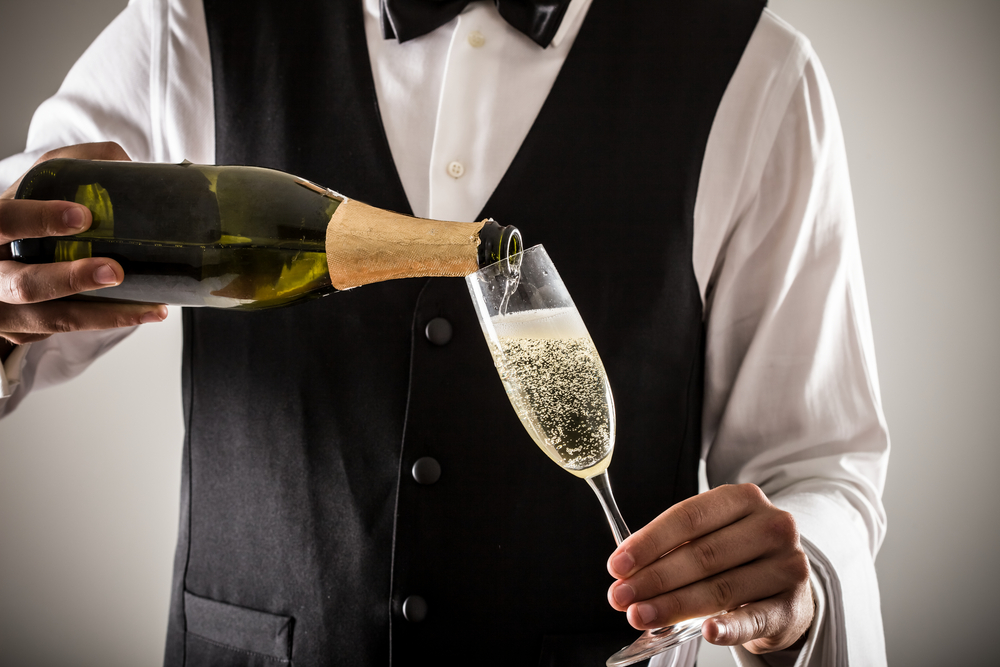
Thus: the iconic coupe was created in the 17th century by a talented team of Venetians hired by the Duke of Buckingham to produce the definitive celebratory glass. Over time, it became synonymous with Champagne. The distinctive expansive surface area of this wide-brimmed glass is pretty yet utterly unsuitable for Champagne. Indeed, the large area ensures that the bubbles escape quickly, while drinking from a coupe can be quite an ordeal. Neither is the much-feted Champagne flute ideal for more complex, structured, sparkling wines. A full flute of Champagne may look chic and inimitably stylish, but it provides little opportunity to really experience the beguiling aromas of late-disgorged vintages such as Dom Perignon P2.
So just this once, Cellar Tours would like to encourage you to embrace the ‘proper’ glass. Many upmarket companies, such as Riedel and Zalto, will gladly sell you expensive glassware tailor-made for Champagne. These eye-catching designs are wonderful, both on a sensory and aesthetic level. However, the perfect solution is often a white wine glass, shaped in the time-honored tulip fashion, boasting a reasonably tall stem. The inward-sloping sides of the glass concentrate the aromas that burst out of luxury Champagne – coffee, caramel, toast, mushroom, forest floor, and quince are typical sensory delights to emanate from older bottles. Using a white wine glass for sparkling wine helps to aerate the Champagne more quickly and brings out its vinous qualities. They are the wisest choice if you’re serving Champagne with food.
However, serving Champagne at room temperature is never advisable. This isn’t merely pretension; it’s hard science; the pressure from the carbon dioxide inside the bottle requires lower temperatures to keep it in check. Open a rare cuvée at room temperature, and the cork will explode out of the bottle, leaving you with insipid and flat Champagne. And possibly a black eye – a monumental waste of an expensive treat and a trip to the emergency room into the bargain.
Higher temperatures, within reason, do allow the aromas to more readily evaporate, but the CO2 will concurrently escape more rapidly. Refrigerator temperature is a standard rule of thumb, anything from 5-9 degrees centigrade. As a general rule, the older the Champagne, the warmer the temperature. Over-chilling Champagne mutes the aromas and dulls the palate. But there is always a trade-off: younger Champagne served at lower temperatures is undeniably more refreshing and fun to drink.
You may have also heard that a teaspoon suspended in a bottle of partly consumed Champagne will help it keep its fizz. This wins the award for the most enduring bit of wine nonsense ever. Its effect will be simply oddly decorative – only a Champagne stopper slows down gas release in sparkling wine—nothing else.
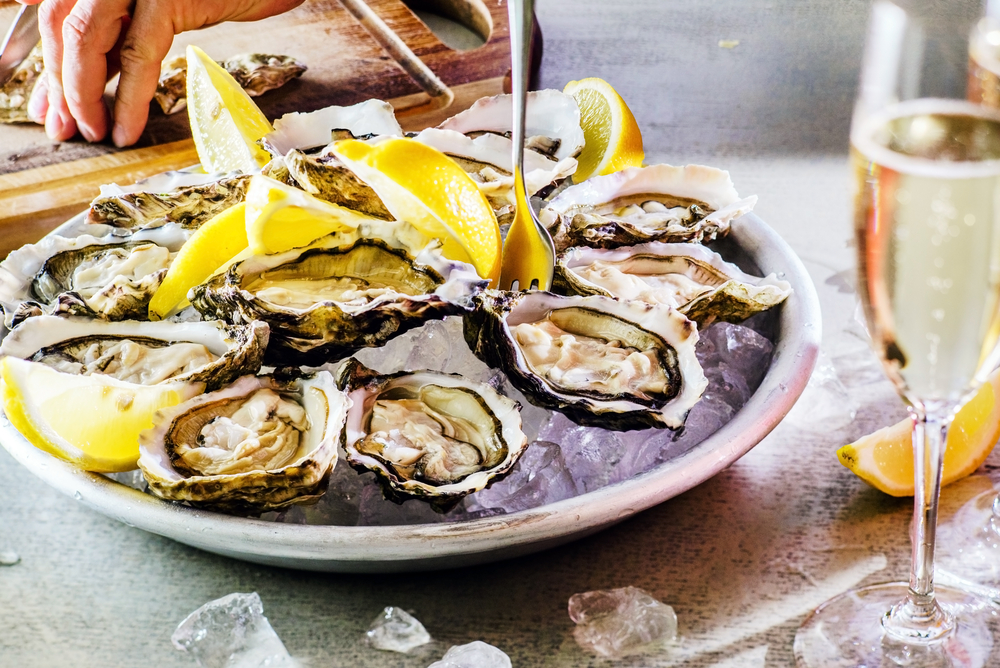
This is a subject that arouses strong feelings among the Champenoise. After years of relentlessly proselytizing Champagne’s suitability and adaptability to gastronomy, sommeliers, and chefs are taking the message on board. As Champagne comes in a range of styles – white, rosé, dry, and sweet – it is only natural that the gastronomic pairings can be just as eclectic. A Blanc de Blancs, such as Dom Ruinart, is exquisite with white fish like Turbot or Dover Sole; a younger style begs to be served with oysters. Rosé Champagne has proven to be a generous partner to pungent game and fowl. At the same time, Pinot Noir-dominant styles – Bollinger comes to mind – will easily handle and enhance Confit de Canard. Demi-sec styles are often more successfully paired with dessert dishes than Sauternes. The possibilities are almost endless. The choice is yours.
If you would like us to customize an exclusive luxury tour, contact us and let us know your travel plans. We offer luxury food and wine tours for private groups of a minimum two guests. In addition, all of our private, chauffeured tours are available year-round upon request.

